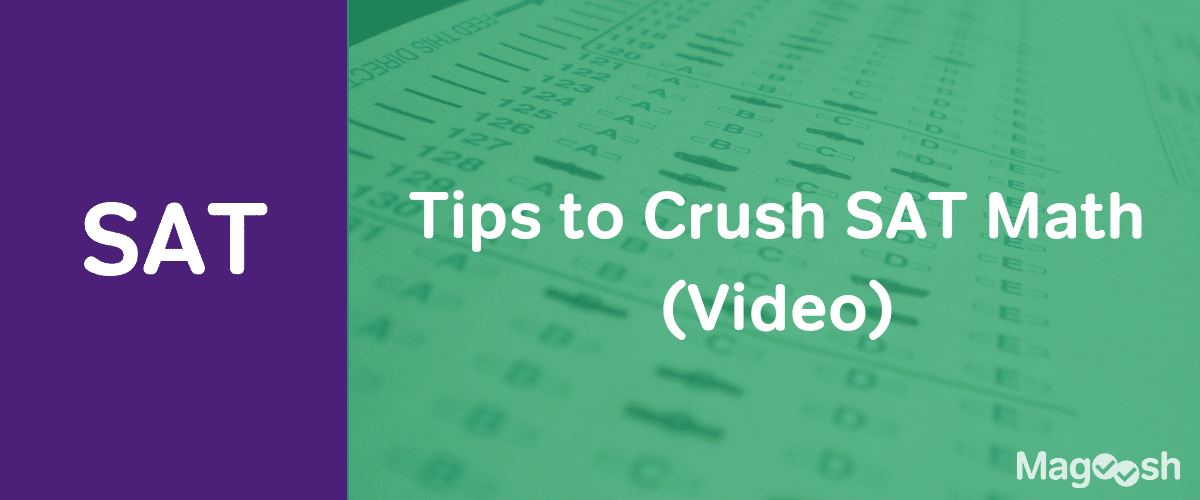Improving one’s ability to do mental math has always been a good idea, but now with the no-calculator math section, it’s lately been a popular topic. While you’re not expected to know how to add or subtract 3-digit numbers or do 2-digit multiplications mentally, but for medium sums, this skill can go a long way on test day. So do a Snoop Dogg and drop that calculator like it’s hot and practice the following tips to improve your mental math agility.

Review and/or expand your times tables
If you’re a little hazy on the times tables you learned oh-so long ago, it might just be a good idea to review them. Write them all out and see how much you can remember. You can even make flash cards. If you’re stuck, don’t reach for the calculator; instead, mentally add the number you are multiplying to the previous number so that you’re practicing mental math as much as possible.
If you’re still sharp with the multiplication tables you learned as a kid, learn some more! Push yourself as far as you like, but it’s probably not necessary to go past 20. It’s also important to practice mentally figuring out equations like 170 x 2 or 1.4 x 6.
Don’t just rely on memorization – look out for patterns and relationships, too
The cool thing about numbers is that they’re all related somehow, which you can always use to your advantage. For example, a solid idea of the relationships between numbers and their factors can help you if you’re blanking on those expanded times tables you just learned. Take the number 16 – it is always going to be 2 times greater than 8 and vice versa. Therefore, any product of 16 and X will always also be the product of 8 and 2X. So if you don’t remember what 16 x 3 equals off the bat, you can change 16 to 8 and double 3 to 6 to think of the equation as 8 x 6 instead.
Also, if you do remember your expanded times tables, understanding patterns and relationships can help you quickly figure out even larger sums without relying on your pencil. Say you come across 27 x 6 on test day. You probably won’t know that off the top of your head. But if you memorized multiplication tables for 18, you’ll know that 18 x 9 is the same thing by using this patterns and relationships strategy.
In a similar note, use the quarter trick to figure out multiplication or division involving 25. Quick, what is 200 divided by 25? Ok, if that was a fast one, how many quarters in $2? If you said 8 without missing a beat, do you realize how that’s the same answer for the first question? Whenever dealing with the number 25, it could, therefore, help you to think of 25 instead as quarters of 100.
Learn front-end addition
When you have to do an equation with two-digit numbers, 64 + 78, for example, you can use the technique of front-end addition to make the mental summing easier. Front-end addition involves adding the tens values before the unit values. In other words, 64 + 78 would end up to be 60 + 70 (130) and 4 + 8 (12) and then 130 + 12 (142). The point of front-end addition is so that you wouldn’t have to rely on any sort of “mental marking,” like carrying over the one, which makes visualizing the summing process so much easier.
This strategy also works for subtraction too. Take 82 – 28. Do 80 – 20 (60), then 2 – 8 (-6), and add them together (54). On paper, it looks like it long process, but it’s simple and fast once you get the hang of it.
Practice during your down time (see tip #10)
If you feel silly doing mental math exercises when you should be doing practice problems, work on mental math during your downtime, like when you’re waiting in line or on the bus. You can even incorporate it into your wake up ritual! There are many alarm clock apps that only shut off after you’ve answered a math question (I suggest the hardest mode). What a great way to practice mental math AND wake up 😉
Start early and don’t get discouraged!!
Since perfecting these techniques can take a bit of time, it’s important to remember that studying for the SAT is not just about learning the topics and doing practice problems; it’s also about perfecting strategies that will help you save time and do well on these practice problems. These techniques may be slow at first, but with practice and patience, you’ll be a mental math whiz before you know it!






Leave a Reply